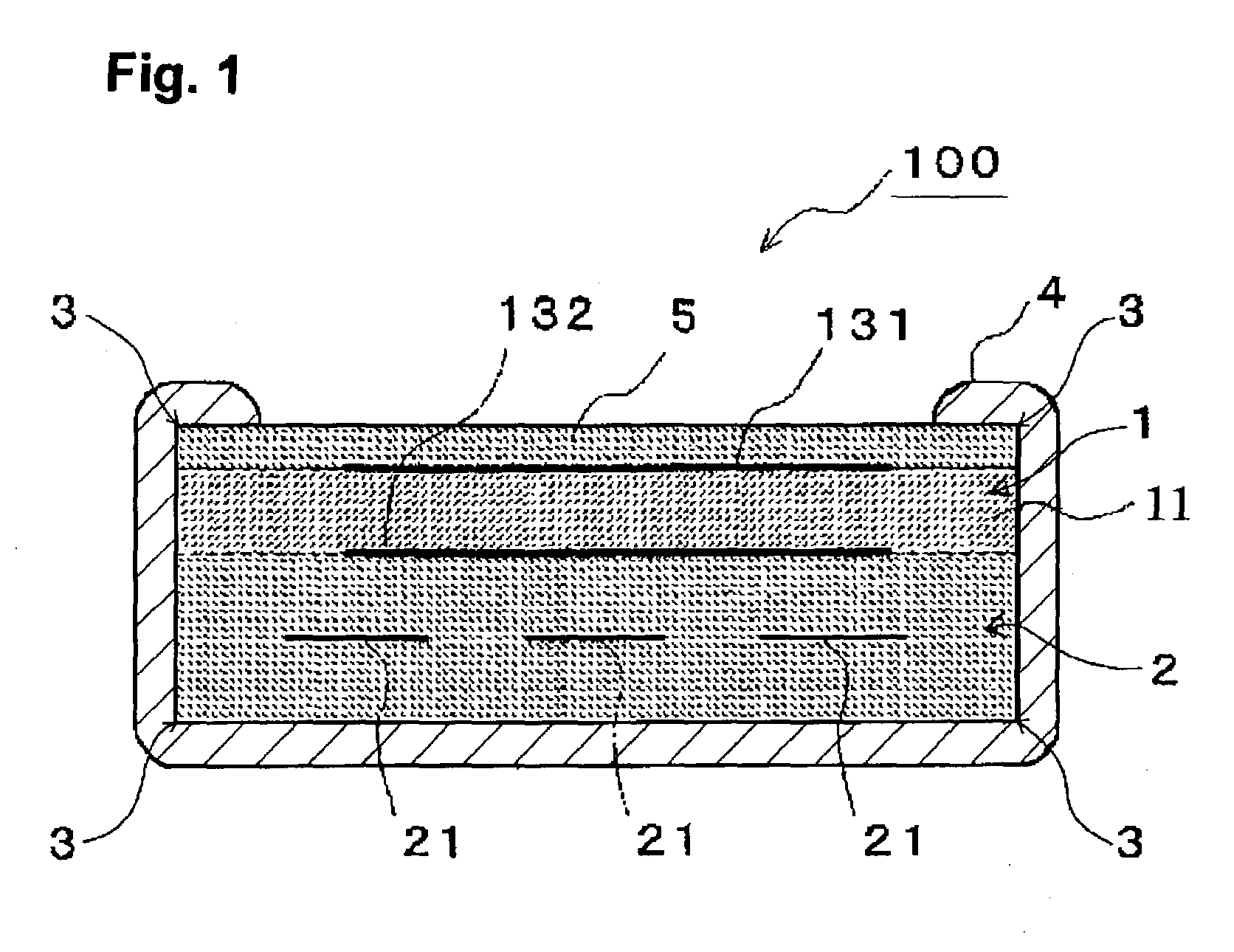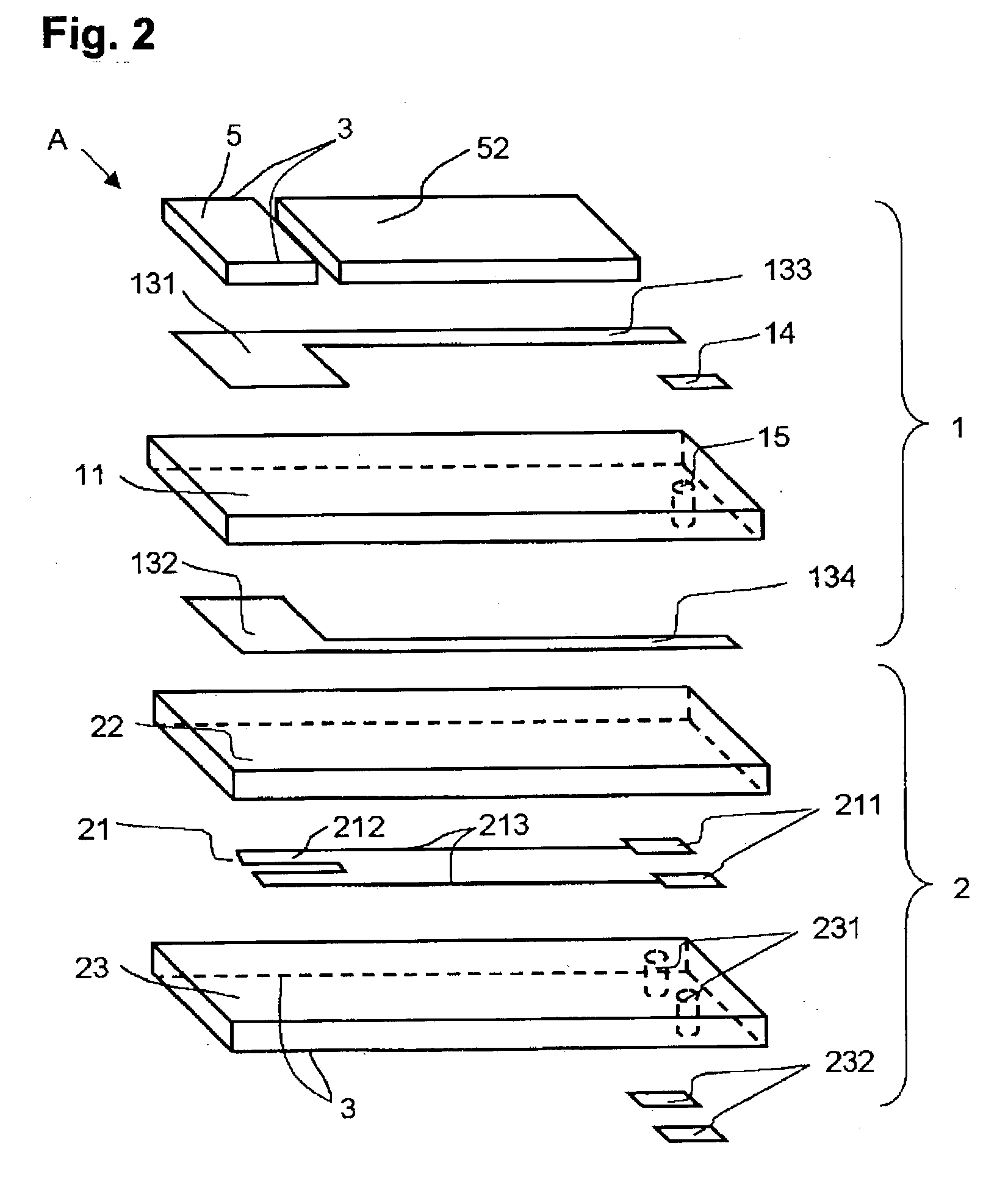Prismatic ceramic heater for heating gas sensor element, prismatic gas sensor element in multilayered structure including the prismatic ceramic heater, and method for manufacturing the prismatic ceramic heater and prismatic gas sensor element
a technology of prismatic ceramic heaters and sensors, applied can solve problems such as thermal shock, sensor elements may crack or break, and ceramic heaters may not be used in the field of gas sensors
- Summary
- Abstract
- Description
- Claims
- Application Information
AI Technical Summary
Benefits of technology
Problems solved by technology
Method used
Image
Examples
Embodiment Construction
[0163] As is apparent from the test results shown in Tables 1 and 2, almost all samples are free from cracking in the water drop test (0.3 .mu.l and 1.0 .mu.l) conducted on their back surfaces. However, in the case of the samples in which the porous protective layer 4 is not formed on its edge portions 3, three elements out of 10 are cracked in the water drop test conducted on the edge portion 3 at an amount of water droplet of 0.3 .mu.l. Further, in the water drop test conducted at a severe amount of water droplet of 1 .mu.l, more than half the samples are cracked. These test results indicate that a sample having no porous protective layer 4 formed thereon is prone to crack upon adhesion of water to at least the edge portion 3.
[0164] By contrast, the samples in which the porous protective layer having a thickness not less than 20 .mu.m is formed on at least the edge portions 3 are free from cracking in the water drop test in which water was dropped on at least the edge portion 3 in...
PUM
| Property | Measurement | Unit |
|---|---|---|
| thickness | aaaaa | aaaaa |
| thickness | aaaaa | aaaaa |
| curvature radius | aaaaa | aaaaa |
Abstract
Description
Claims
Application Information
 Login to View More
Login to View More - R&D
- Intellectual Property
- Life Sciences
- Materials
- Tech Scout
- Unparalleled Data Quality
- Higher Quality Content
- 60% Fewer Hallucinations
Browse by: Latest US Patents, China's latest patents, Technical Efficacy Thesaurus, Application Domain, Technology Topic, Popular Technical Reports.
© 2025 PatSnap. All rights reserved.Legal|Privacy policy|Modern Slavery Act Transparency Statement|Sitemap|About US| Contact US: help@patsnap.com



